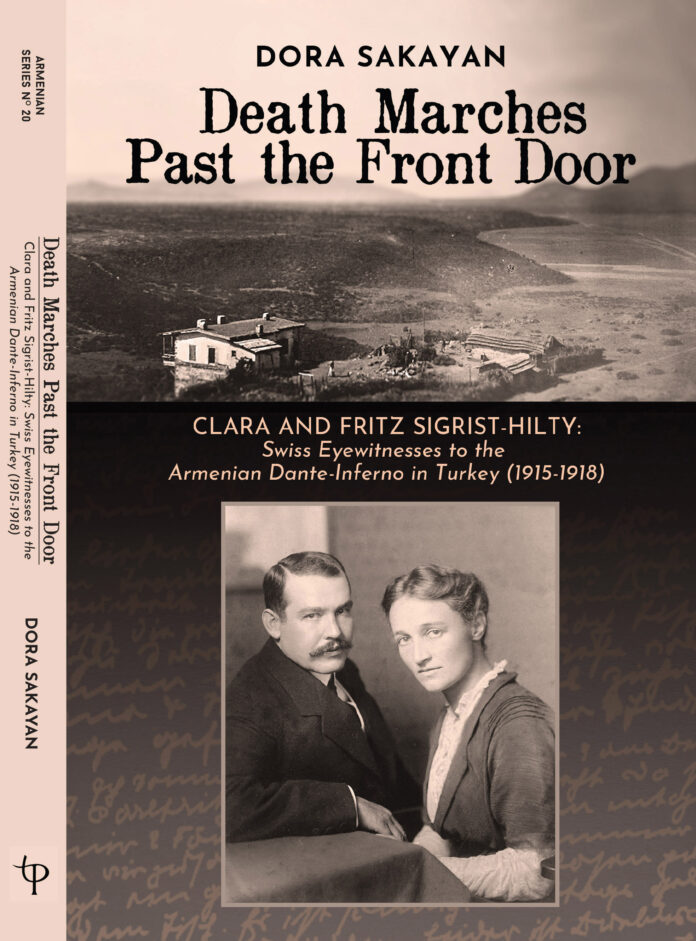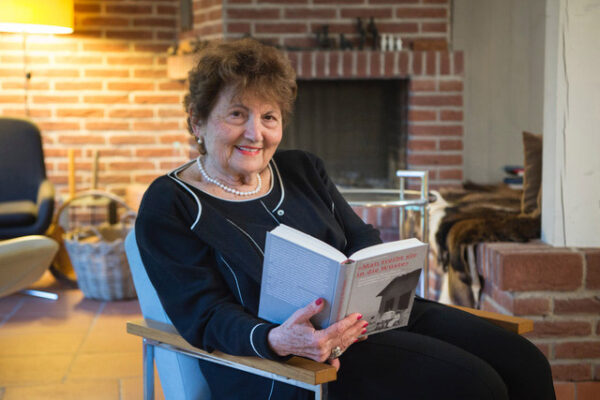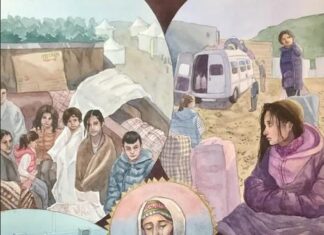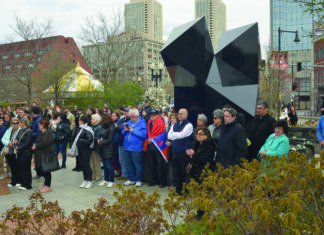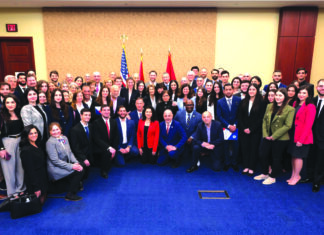FRESNO — The Armenian Studies Program announces the publication of Death Marches Past the Front Door: Clara and Fritz Sigrist-Hilty, Swiss Eyewitnesses to the Armenian Dante-Inferno in Turkey (1915-1918), by Dora Sakayan, Volume 20 in the Armenian Series of The Press at California State University, Fresno. The book was edited by Barlow Der Mugrdechian and Zareh Tjeknavorian.
“Death Marches Past the Front Door represents a unique addition to the Armenian Series at Fresno State,” said Prof. Barlow Der Mugrdechian, general editor of the Armenian Series. “Clara and Fritz Sigrist-Hilty’s account of their stay in Turkey in 1915 provides a never before revealed perspective of the Armenian Genocide. Dora Sakayan has presented in English for the first time a fascinating recounting of an important period in Armenian history.”
On the day of their church wedding, the civil engineer Fritz Sigrist and the nurse Clara Hilty take the train from Werdenberg (Switzerland) and travel through the war zone across the Balkans to southeastern Turkey. After Turkey’s involvement in World War I as Germany’s ally, it was certainly not the ideal place for a honeymoon, but Fritz had been working on the construction of the Baghdad railway since 1910. After a short stop in Constantinople, the newlywed couple settled down for a few months in Entilli, then for three years in Keller.
Shortly after their arrival in Turkey, the Armenian deportations began, and thousands of Armenians were marched past their front door. For three years the couple witnessed “the lapsing of human lights down there in the steep gorge” while they lived their everyday life in their little house on the remote hillside. A visit to Aleppo and the Katma concentration camps makes them realize that what they were seeing in Keller on a daily basis was nothing less than premeditated death marches, i.e., the Armenian Genocide. Things become worse when the skilled Armenian workers — actively involved in the Baghdad railway construction – are also forced to join those death marches.
Clara records the atrocities, first in her journal, later in a memoir or a special eyewitness account. Fritz in his turn, writes two stories and a letter on the subject.
Dora Sakayan has deciphered the Swiss archive documents written mostly in Gothic handwriting and has meticulously processed them and embedded them in the historic events of the time. Moreover, based on a 1970 memoir by Haig Aramian, Sakayan recounts the adventurous story of how in June 1916 the Sigrist-Hilty couple helped their Armenian storehouse manager Aramian escape certain death.



